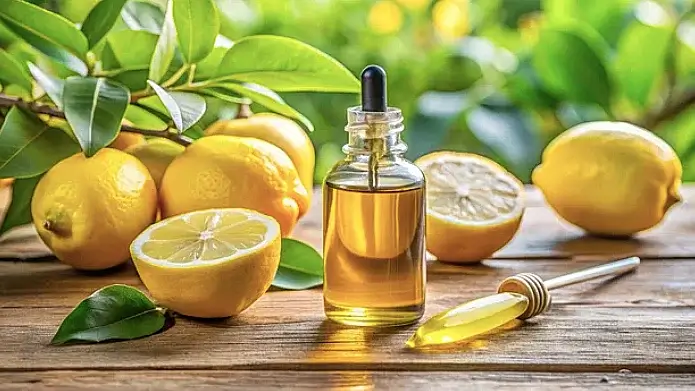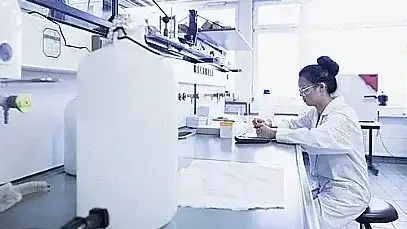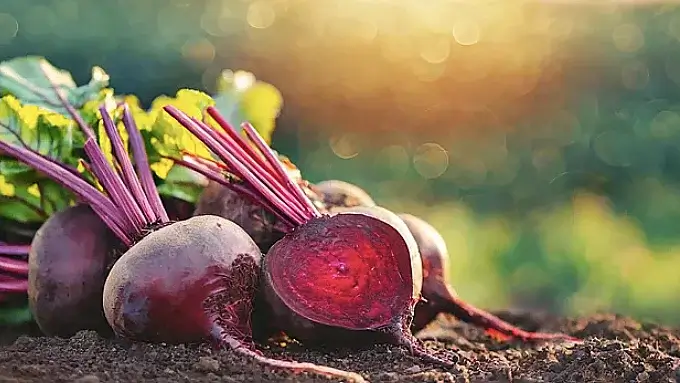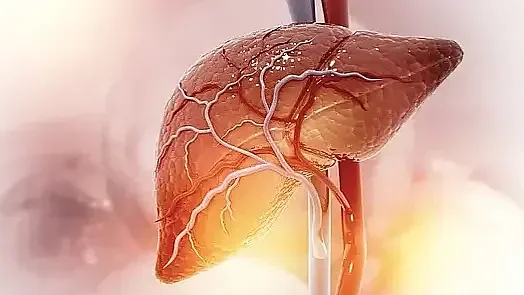How Turmeric Helps Reduce Liver Fat
 Turmeric powder with Curcuma longa rhizome (root)
Turmeric powder with Curcuma longa rhizome (root)A Golden Remedy with Scientific Backing
Turmeric, a vibrant yellow spice derived from the Curcuma longa plant, has gained significant attention for its potential role in managing liver health. For individuals with fatty liver disease, understanding how turmeric helps reduce liver fat can be crucial. Turmeric’s active compound, curcumin, exhibits anti-inflammatory and antioxidant properties that directly target key mechanisms underlying hepatic steatosis (fatty liver).
Fatty liver disease, including non-alcoholic fatty liver disease (NAFLD) and non-alcoholic steatohepatitis (NASH), affects millions worldwide. These conditions are closely linked to obesity, insulin resistance, and chronic inflammation. Emerging evidence suggests turmeric’s ability to mitigate these factors, making it a promising adjunct to conventional treatments.
The Science Behind Turmeric’s Benefits
Curcumin’s Role in Fat Metabolism
Curcumin, the primary bioactive compound in turmeric, has demonstrated a direct influence on lipid metabolism. Studies indicate that curcumin regulates genes involved in lipogenesis (fat synthesis) and enhances fatty acid oxidation. This dual mechanism reduces lipid accumulation in liver cells, addressing one of the fundamental causes of fatty liver disease.
Additionally, curcumin enhances the activity of AMP-activated protein kinase (AMPK), a key enzyme that promotes energy expenditure and reduces fat storage. By activating AMPK, curcumin supports metabolic processes that decrease liver fat over time.
Anti-Inflammatory Effects: A Key to Liver Health
Inflammation is a hallmark of fatty liver disease, particularly in its progression from NAFLD to NASH. Turmeric’s anti-inflammatory properties are mediated through its ability to inhibit nuclear factor-kappa B (NF-κB), a protein complex that triggers inflammatory pathways. By downregulating NF-κB activity, curcumin reduces pro-inflammatory cytokines, such as tumor necrosis factor-alpha (TNF-α) and interleukin-6 (IL-6).
This anti-inflammatory action helps to:
- Reduce hepatocellular damage caused by chronic inflammation.
- Prevent the progression of simple steatosis to more severe forms of liver disease.
Antioxidant Properties: Protecting Liver Cells
Oxidative stress, caused by an imbalance between free radicals and antioxidants, plays a pivotal role in fatty liver disease. Excess fat in the liver leads to the production of reactive oxygen species (ROS), which damage liver cells. Curcumin combats oxidative stress by enhancing the activity of endogenous antioxidant enzymes, including superoxide dismutase (SOD) and glutathione peroxidase (GPx).
By neutralizing ROS, curcumin:
- Protects hepatocytes from oxidative damage.
- Improves liver function markers, such as alanine aminotransferase (ALT) and aspartate aminotransferase (AST).
Clinical Evidence Supporting Turmeric’s Efficacy
Several clinical trials have explored how turmeric helps reduce liver fat in patients with NAFLD. A notable randomized controlled trial published in Phytotherapy Research demonstrated that patients who received curcumin supplementation experienced significant reductions in liver fat content and improved liver enzyme levels compared to those receiving a placebo.
Key findings from recent studies include:
- Reduction in Liver Fat Content: Curcumin supplementation decreased hepatic fat as measured by imaging techniques.
- Improved Insulin Sensitivity: Curcumin’s effects on insulin signaling pathways enhanced glucose metabolism, indirectly reducing liver fat.
- Weight Management: Participants showed modest weight loss, contributing to overall improvements in liver health.
How Turmeric Compares to Other Treatments
Turmeric vs. Conventional Medications
While medications such as pioglitazone and vitamin E are commonly prescribed for NAFLD, turmeric offers a natural alternative with a favorable safety profile. Unlike some pharmaceuticals, curcumin supplementation is associated with minimal side effects, making it suitable for long-term use.
Turmeric and Lifestyle Interventions
Lifestyle changes, including dietary modifications and physical activity, remain the cornerstone of fatty liver management. Incorporating turmeric into an anti-inflammatory diet can amplify these efforts by targeting multiple pathways involved in liver fat accumulation.
Practical Applications: Integrating Turmeric into Your Routine
Dosage Recommendations
Clinical studies have used curcumin doses ranging from 500 mg to 2,000 mg per day to achieve therapeutic effects. For optimal absorption, curcumin should be consumed with black pepper, which contains piperine—a compound that enhances curcumin’s bioavailability by up to 2,000%.
Dietary Sources vs. Supplements
While turmeric as a spice offers health benefits, achieving therapeutic levels of curcumin often requires supplementation. Choose high-quality curcumin supplements with standardized formulations to ensure efficacy.
Synergistic Foods
Pairing turmeric with other anti-inflammatory foods, such as fatty fish rich in omega-3s, leafy greens, and nuts, can further support liver health. These combinations enhance the overall antioxidant and anti-inflammatory effects.
Safety and Precautions
Although turmeric is generally safe, high doses of curcumin may cause mild gastrointestinal discomfort in some individuals. Patients with gallbladder issues or those taking anticoagulants should consult a healthcare provider before using turmeric supplements.
The Future of Turmeric in Liver Health
Ongoing research continues to uncover new insights into how turmeric helps reduce liver fat. Advances in nanotechnology are enhancing curcumin’s bioavailability, potentially increasing its therapeutic potential. Future studies may establish curcumin as a standard adjunct therapy for fatty liver disease.
Conclusion
Turmeric’s multifaceted benefits make it a valuable ally in the fight against fatty liver disease. Through its anti-inflammatory, antioxidant, and lipid-regulating properties, turmeric addresses the core mechanisms of hepatic steatosis. While it should not replace medical treatments or lifestyle interventions, turmeric can serve as a complementary approach to improving liver health. By understanding how turmeric helps reduce liver fat, patients and healthcare providers can explore its potential as part of a comprehensive management strategy.
Share this article

Dr. Irene Paragas, MD
I am a Medical Doctor, Registered Nutritionist-Dietitian, and seasoned virtual professional. See Full Bio.
-
1. Panahi Y, Kianpour P, Mohtashami R, et al. Curcumin supplementation and the severity of nonalcoholic fatty liver disease: A randomized controlled trial. Phytotherapy Research, 2017.
-
2. Ajit Varki, Das U, Stein M. Molecular mechanisms of curcumin in liver fat reduction. Journal of Hepatology, 2021.
-
3. Aggarwal BB, Harikumar KB. Potential therapeutic effects of curcumin in liver diseases. Biochemical Pharmacology, 2009.
-
4. Sadeghi A, Taheri S, Valiani A, et al. The effects of curcumin on liver enzymes and biomarkers in patients with NAFLD. Nutrition Journal, 2016.
-
5. Rahmani AH, Alsahli MA, Almatroudi A, et al. Curcumin's anti-inflammatory and lipid-lowering effects in metabolic syndrome. Advances in Experimental Medicine and Biology, 2020.
-
6. Eslami A, Khorvash F, Rezaei A. Effects of turmeric supplementation on liver fat and insulin resistance. European Journal of Clinical Nutrition, 2018.
-
7. Liu W, Zhai Y, Heng X, Che FY, Chen W, Sun D, Zhai G. Oral bioavailability of curcumin: problems and advancements. Journal of Drug Targeting, 2023.
The Role of Curcumin in Managing Fatty Liver Disease As a medical doctor, I often encounter patients who are seeking natural alternatives to manage their...
The Science Behind Antioxidants and Liver Health Antioxidants play a pivotal role in maintaining overall health, particularly when it comes to liver function. The liver...
Diet Knowledge Quiz A balanced, liver-friendly diet is essential in managing fatty liver disease. While many factors contribute to liver health, certain dietary...

You might enjoy more articles by
Dr. Irene Paragas, MD
 Disease
Disease Diets
Diets Recipes
Recipes Supplements
Supplements Management
Management Calculators
Calculators Quizzes
Quizzes Glossary
Glossary
























